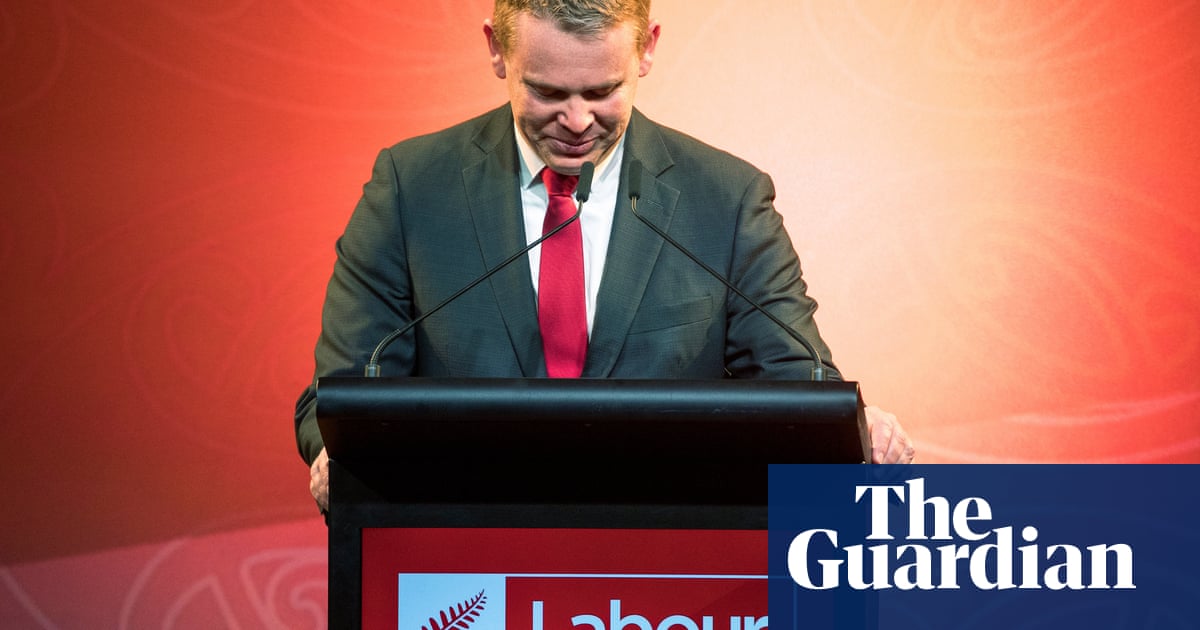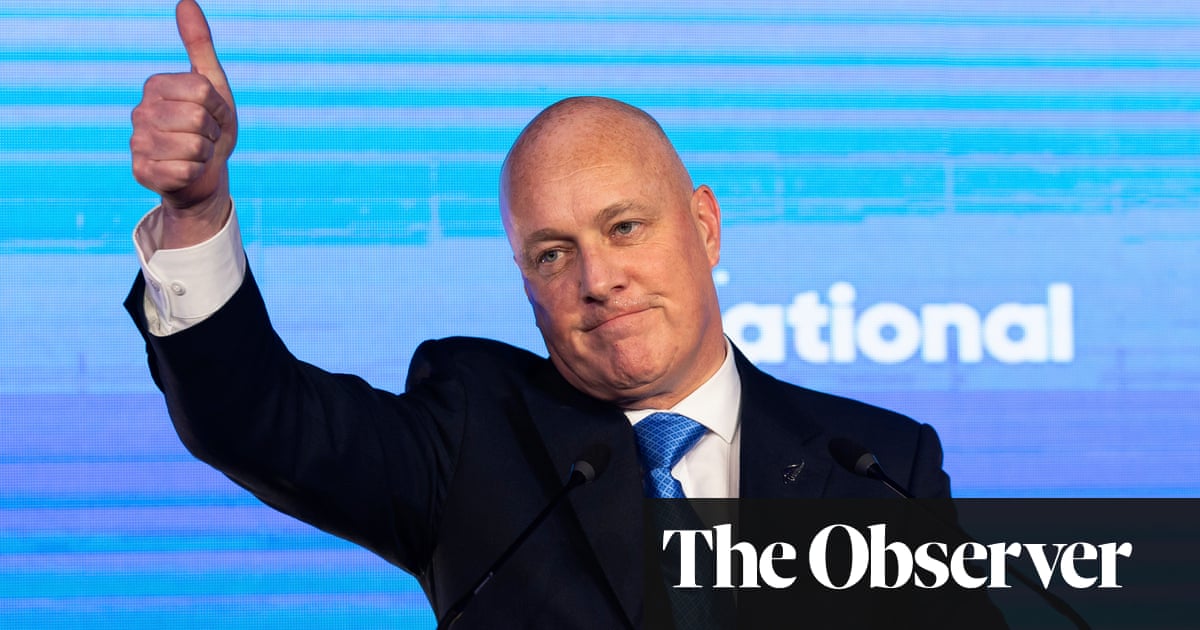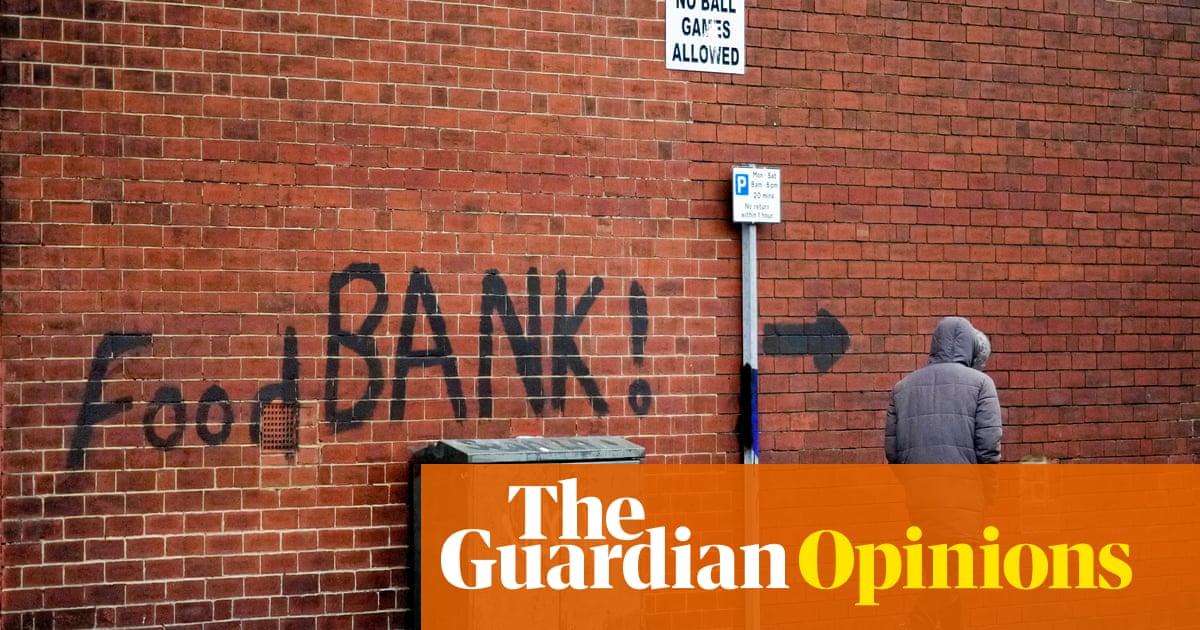
It was an assessment with a distinctly New Zealand flavour. “At the end of the day, there’s one unavoidable reality,” said Chris Hipkins, the defeated Labour prime minister, speaking to reporters after he conceded the country’s election on Saturday. “We lost because not enough people voted for us.”
But that was only part of it. Hipkins’ ruling, centre-left Labour party had crashed from the historic highs of its 2020 election result, in which it won 50% of the vote, to a dismal 27% on Saturday, nearly halving its seats in parliament. However, the punishing loss was not only a clear defeat by the right-leaning parties that will form the next government – the size and shape of which will be determined when a final vote tally is announced on 3 November; the blows also came from Labour’s left.
One supporter at the party’s headquarters in Lower Hutt on Saturday, wearing a red rosette and a brave face, said Labour was “just getting a kicking” from “everyone”. On the TV screen behind him, candidates from the leftwing Green party seized two seats in the capital, Wellington, that had been Labour strongholds for more than two decades.
While the result was prompted in part by the long tail of the pandemic and a steep cost of living crisis, it was also a reckoning for a Labour government – originally led by Jacinda Ardern – that had, at times, loftier progressive aspirations than it could fulfil, analysts said.
“In 2020, Labour had the mandate of a generation and set high expectations, which the electorate didn’t think they delivered,” said David Cunliffe, a former Labour leader.
The effect was magnified by a wave of New Zealanders born in the early 2000s and voting for the first time, who were seeking values-based policy, Cunliffe added. “There’s a sense that Labour wasn’t giving them that.”
Ardern – who led the party from 2017 until she abruptly quit the premiership in January, citing exhaustion – had campaigned for office with ambitious and tangible targets for child poverty reduction and building houses, backed by a sweeping vision of a kinder and more inclusive politics. It drew fresh appeal for a party floundering in the polls.
While the Labour-led government reformed abortion law and bolstered the rights of workers and tenants, its record was at times harmed by ambitious targets on other matters.
“I think the vision that was sold was not realistic,” said Shamubeel Eaqub, an independent economist, referring to the child poverty pledges that fuelled Ardern’s rise.
“To say that ‘we’re going to be lifting all these people out of poverty, but we’re not going to have any reforms in the tax system and we’re going to keep funding things the same way’,” he said. “Well, you’re not going to get different results while doing more of the same.”
Labour had also done “a lot of good things quietly”, and missed chances to boldly “build majorities in support of progressive policy”, said Max Harris, a lawyer, campaigner and commentator. The party’s attempts to introduce policy on matters such as prisons or Indigenous rights without upsetting anyone allowed the government’s opponents to seize the narrative on controversial topics.
As the pandemic dragged on, Ardern, and then Hipkins, were vexed throughout their times in office by factors beyond domestic politics. Hipkins inherited a party that was slumping in the polls amid inflation at three-decade highs and a series of interest rate hikes. He said on Saturday that his party’s woes reflected an international trend.
“If you look around the globe, no governments that have governed through the Covid-19 period have fared particularly well when the next polls have rolled around,” the Labour leader told reporters.
Rising prices and rancour in the largest city, Auckland, about lengthy coronavirus lockdowns generated further difficulty for Labour. The dismal polls prompted Hipkins, when he took the party’s helm, to “scale back many of Labour’s more progressive policies”, Cunliffe said.
Central among Hipkins’ strategies was his decision to rule out introducing a wealth tax, which was supported by 63% of New Zealanders, according to one poll.
Harris said: “Vested interests and critics of Labour’s delivery, some of whom never really supported large-scale government action anyway, managed to move the government towards less ambitious policy, which then left the public thinking the government was delivering even less.”
With his rejection of the tax, Hipkins made a tilt to retain centrist voters who had flocked to Labour in 2020, rather than shore up its leftwing base, Cunliffe said.
He added: “It was not a winning strategy.”
As well as the political right, the beneficiaries were Labour’s traditional support parties – the Greens and Te Pāti Māori – which both bolstered their seats in parliament on Saturday, often at Labour’s direct expense.
“Going against the right trend were parties that supported a much more progressive tax system, a capital gains tax or a wealth tax,” said Shane Te Pou, a former Labour party activist. “I know that there was also a lot of support for that amongst the Labour heartland and there were many Labour members of parliament that supported it.”
However, the blame for a “shallow and frustrating” campaign – in which parties made pledges with little ability to enact them – should be apportioned across the board, said Eaqub, the economist.
The centre-right National party, which was ushered into pole position to form a government on Saturday with promises of tax cuts funded by slashed government spending, would face the same reckoning as Labour at the next election, Eaqub said.
“The National government has said they will spend less and get better outcomes,” he added. “It’s a hell of a big ask and I think they have set themselves up to fail.”












